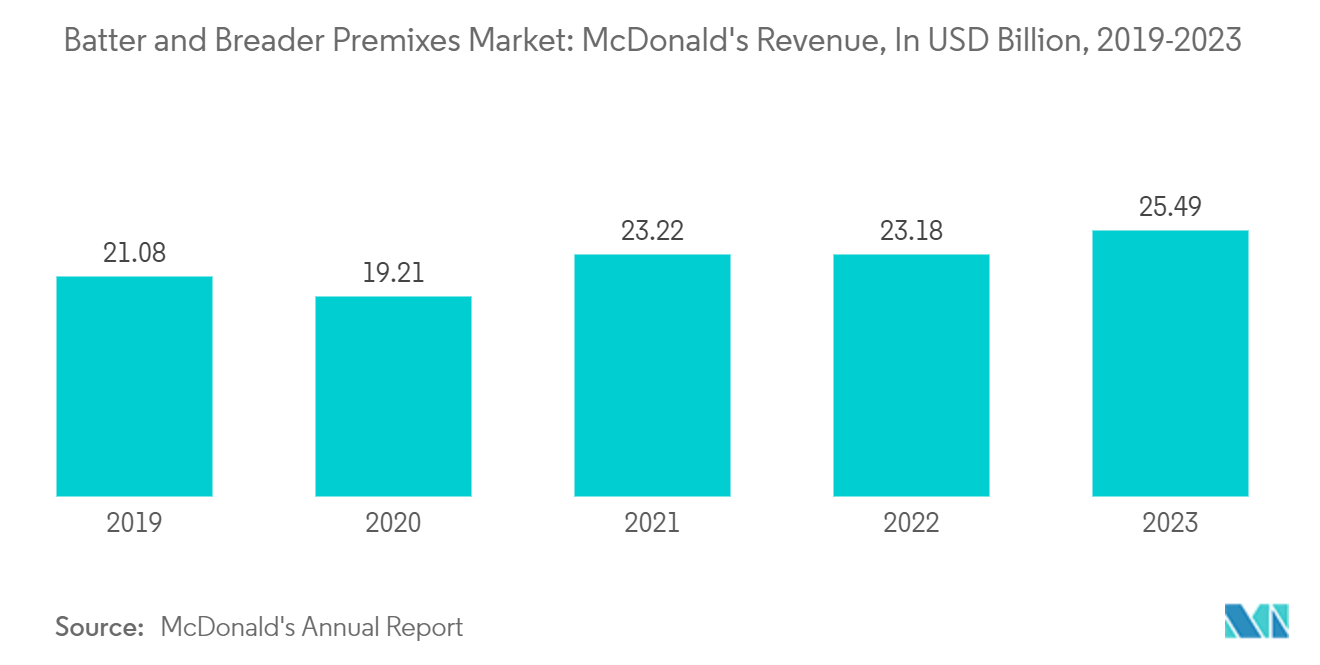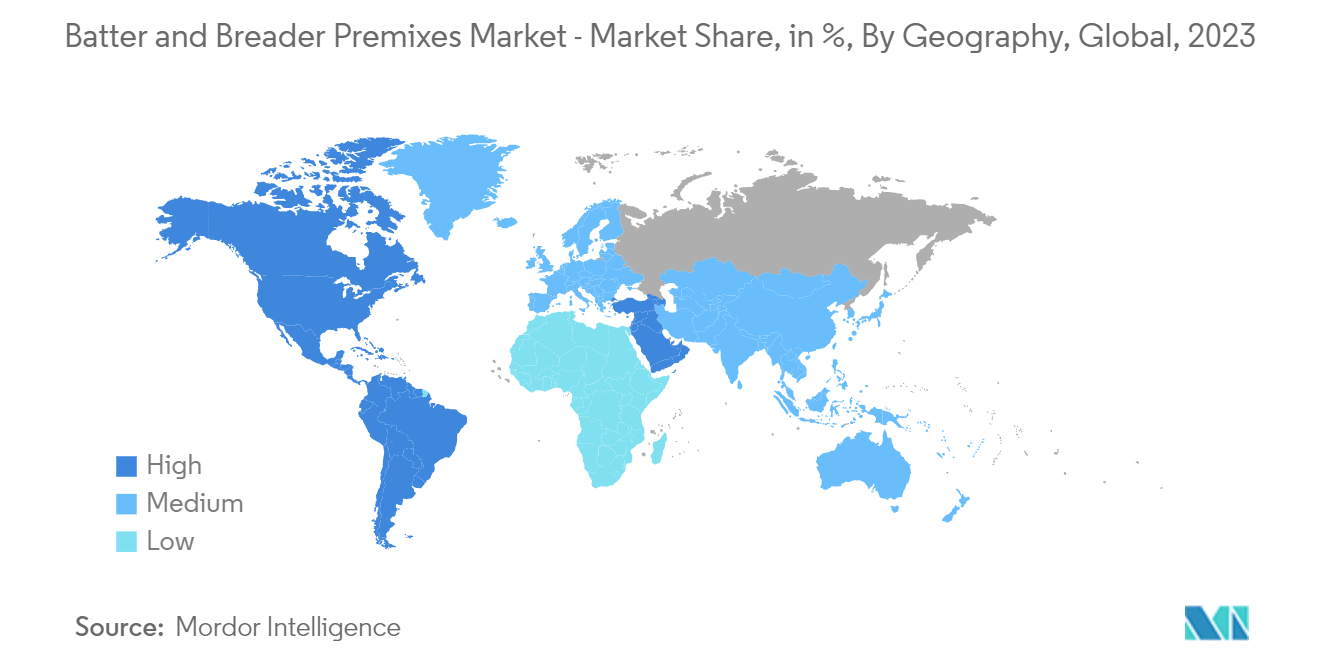Market Trends of Batter And Breader Premixes Industry
Rising Demand for Adhesion Batters Driving the Market
Adhesion batter is used to stick crumbs and breading on a food product. It is made from starch and is characterized by its high solid content and low viscosity. The adhesion batter binds the outer layers of coating to the food product by creating a cohesive layer between them. It aids in controlling the pick-up of breading, which reduces crumb fall-off and prevents surface voids. Adhesion batter plays an important part in overall coating systems. It ensures that the outer coatings are well adhered to the product during reheating and other food processing activities. Such benefits offered by adhesion batter are expected to drive demand in this segment during the forecast period. According to the annual report of Yum! Brands, in 2023, there were 29,900 KFC restaurant franchise establishments in the United States.
Moreover, adhesion batters enhance the appearance of food products, making them light, crispy, and flavorful. Additionally, batter and breader premixes add flavor, texture, and color to meat products while improving the cooking process. The increasing Asian-American population has led to a rise in the consumption of rice flour as an alternative to wheat flour in traditional batter formulations, thereby driving the growth of the adhesion batters segment. Rice flour batters are widely used as adhesion batter for chicken drumsticks. The expansion of quick-service restaurants (QSRs) is a significant factor propelling the batter and breader premixes market. QSRs rely on consistency and efficiency in their food preparation processes, and batter and breader premixes provide a standardized solution that ensures uniformity in taste and texture, essential for maintaining the quality standards that QSRs promise their customers. All of these factors contribute to the global growth of the batter and breader premixes market.

North America Holds the Largest Market Share
The demand for batter and breader premixes in this region has increased due to the increased penetration of quick-service restaurants and increased chicken and beef consumption. The high demand for fried food has prompted industry operators to create new items that appeal to consumers' local preferences. For instance, according to the International Franchise Association, in 2023, it was estimated that there were 195,507 quick-service restaurant franchise establishments in the United States. Additionally, the ease of use, high nutritional value, functionality, and quick delivery are just a few of the many attributes processors look for in premixes, and companies are increasingly bringing innovative and creative ideas to meet this demand. Moreover, the growing chicken consumption worldwide and an increase in demand for easy-to-prepare chicken-based products, such as chicken nuggets and chicken fries, have been driving the growth of this segment for the past few years.
Players are expanding their regional presence with the growing demand for batter and breader premixes. Breader premixes are used in various applications, including chicken, seafood, vegetables, and other processed foods, to provide a crispy and crunchy texture while preserving the food's flavor. Additionally, the rise in the consumption of fried and breaded foods such as chicken nuggets, fish fillets, and onion rings has fueled the growth of this market. The chicken application segment accounts for a significant share of the breader premixes market, driven by the rising demand for processed and convenience foods and the growing popularity of takeaway foods, including fried chicken, fish, and chips. For instance, according to the US Department of Agriculture, the per capita consumption of poultry in the United States was around 117.4 pounds in 2023. Moreover, the trend toward healthier eating options has spurred the development of gluten-free and low-sodium premixes to cater to diverse dietary preferences. All such factors are expected to drive the North American breader and batter premixes market during the forecast period.


